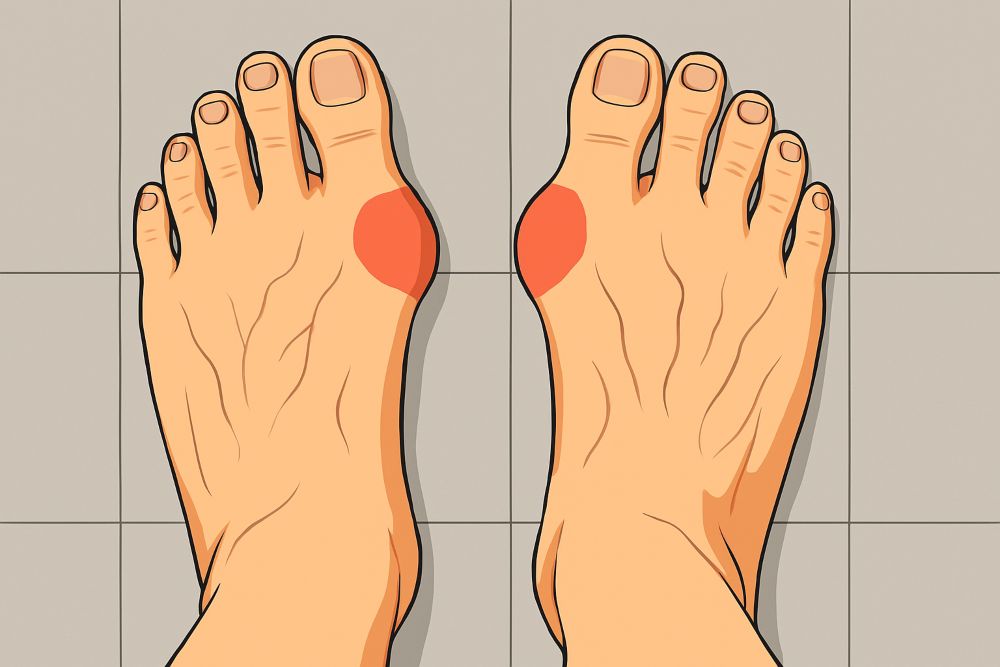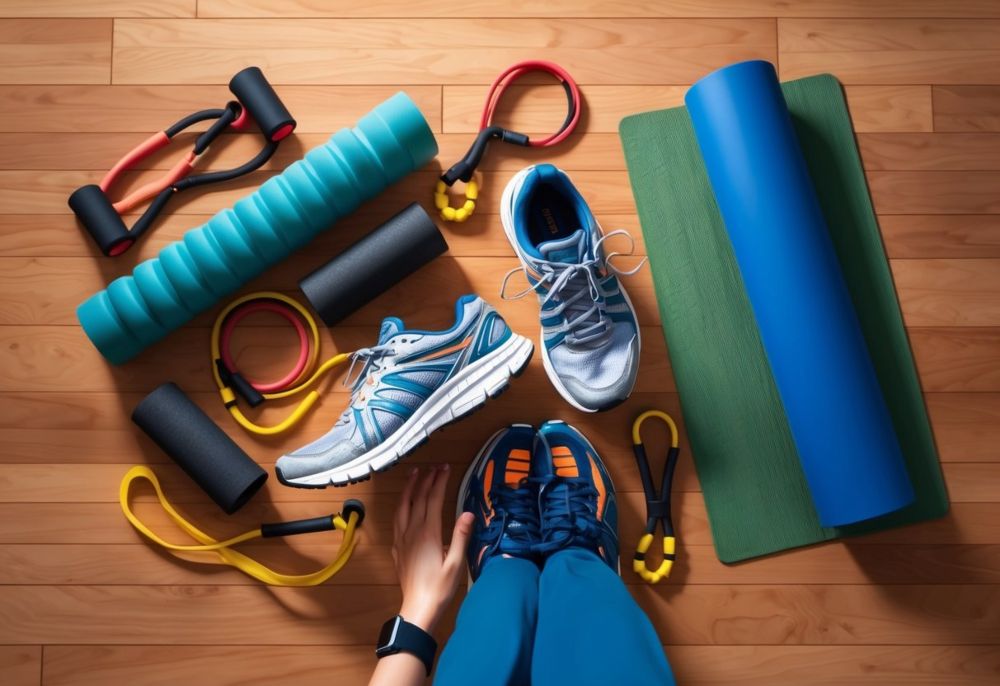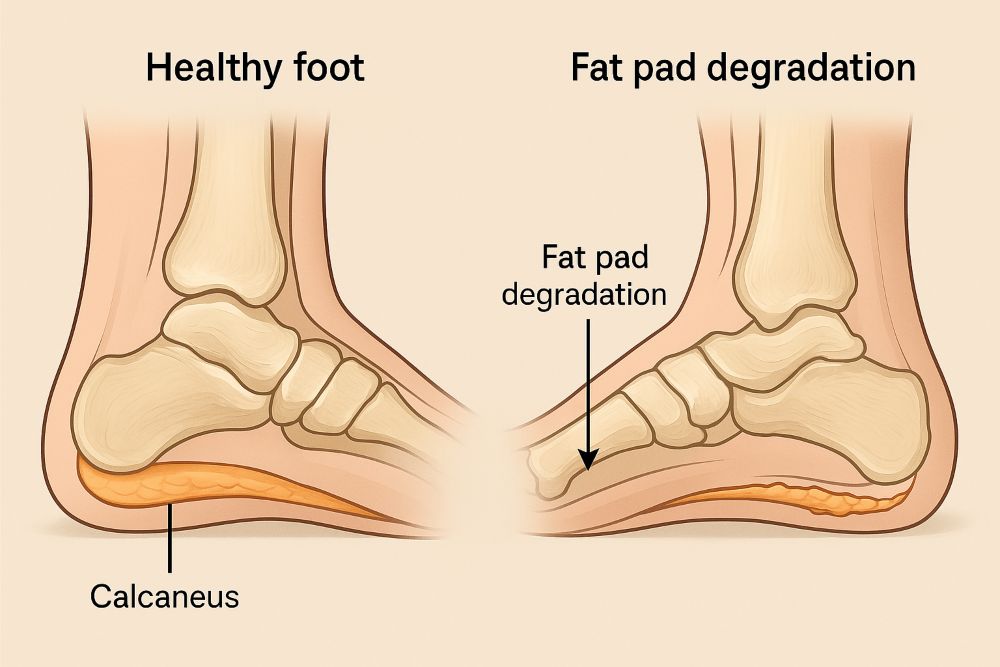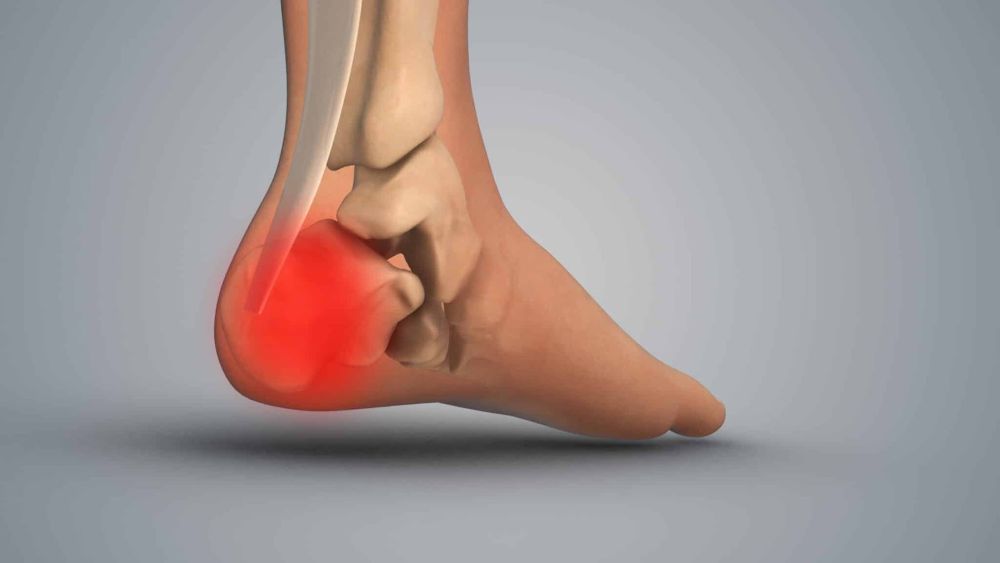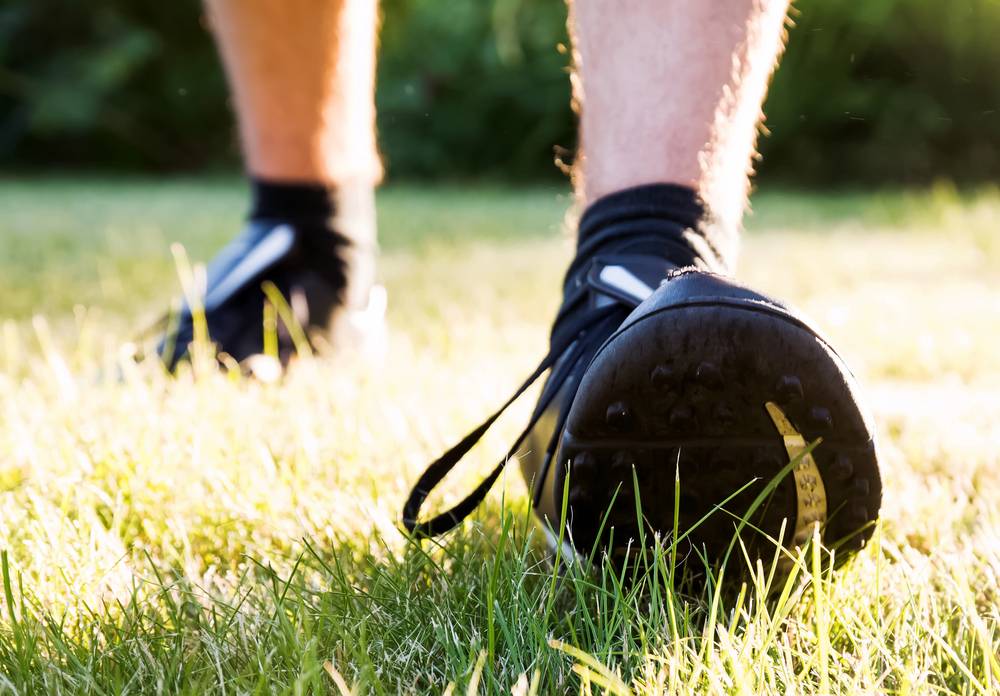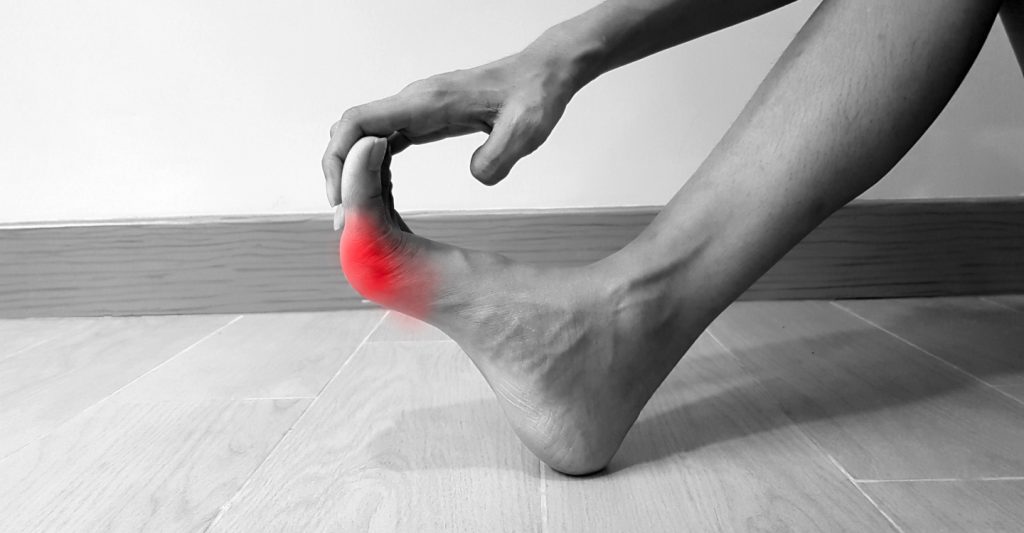Lower leg health means the condition of your muscles, bones, joints, and blood circulation down to the ankle. When your lower legs are in good condition, you can easily walk, run, and stand without any problem.
The health of your lower legs is critical to whether you can move well. The strong muscles and flexible joints in your lower legs will help you to keep from losing your balance and injuring yourself. Healthy bones and joints are your power points for supporting body weight and helping maintain good posture.
If you consume too much salt or do not exercise enough, it can significantly damage your lower leg health. Too much salt may lead to swelling in the legs. It can also be a sign of other medical conditions like a venous insufficiency. It can also help increase your blood pressure, which is unsuitable for leg circulation.
If you do not move enough, it can make your lower leg muscles weak. Your bones will also become more fragile, and your joints will be rigid. If you do not exercise, your muscles can shrink, your flexibility may decrease, and you may not be able to balance correctly.
Lower legs are significant for body movement and balance. We will focus on why keeping your lower leg healthy is so important.
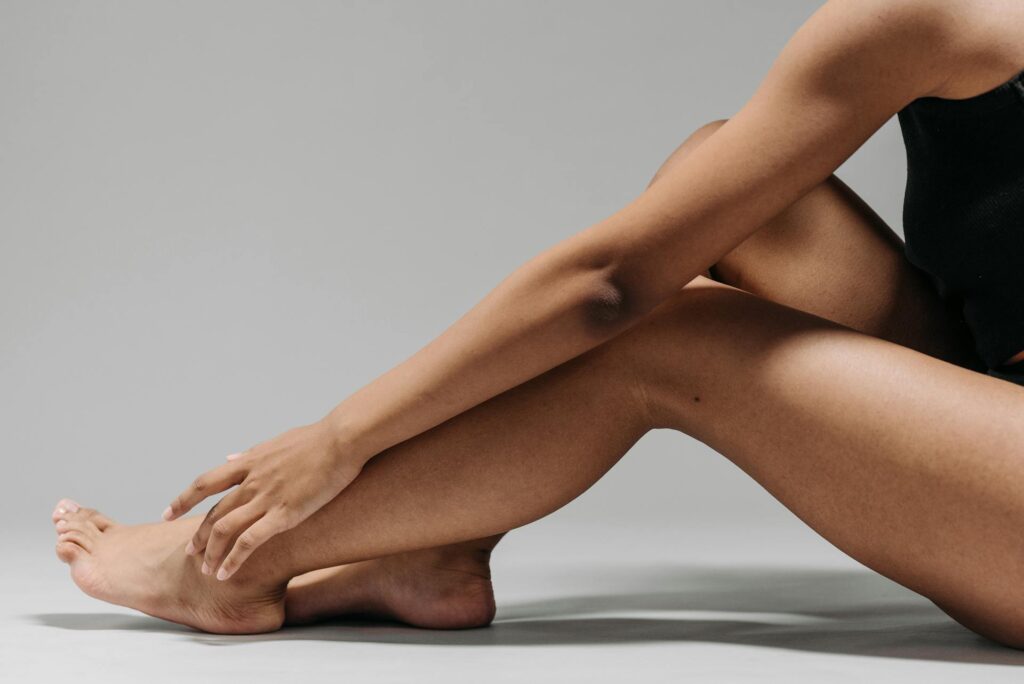
Does Salt Cause Swelling in Feet?
Salt, also known as sodium chloride, is a common mineral in our diets and helps maintain our bodies ‘ fluid and electrolyte balance. While it is necessary for many body functions, excessive salt intake can harm your lower legs’ legs’ health.
If you overeat salt, your feet and ankles will puff up like balloons–a medical condition called “peripheral edema.” With more sodium than usual in your body, your kidneys may hold on to more water retention to maintain the balance, which means some fluid is left hanging around in your blood. This excess fluid can escape into the tissues surrounding your feet and ankles, causing them to swell up or become edematous.
People with health problems such as high blood pressure, heart disease, or kidney disease who eat salty foods can experience this leg and ankle swelling. The situation is especially pronounced when you spend long sitting or standing because gravity causes more fluid to collect.
Mechanisms of Salt-Induced Swelling in Lower Extremities
Consuming salt interferes with water movement in and out of your cells, traps extra fluid, and encourages swelling. Salt can mess up your body’s drainage for fluids, making getting rid of the return much harder. Your age, hormones, medications, and any health problems you have can all make the swelling worse when you overeat salt.
Overeating salt affects how your blood flows and how well your blood vessels function, causing your feet or ankles to swell even more. Too much sodium in the blood may lead to minor problems such as insufficient nitric oxide production and cardiovascular stress or oxidative stress experienced by the vessel walls. When this happens, your blood vessels become inflamed and malfunction.
As a result of such changes in the blood vessels, fluid balance at the whole body level gets thrown out, and swelling starts to appear. When you overeat salt, it also makes existing circulation problems worse. For instance, it worsens issues with veins, the lymphatic system, and fluid in the legs.
Overeating salt causes swollen feet, causing your body to hold onto too much water, increasing your blood pressure and creating problems in blood circulation. Cutting back on salt and drinking water, together with keeping your circulation healthy, will all help to prevent leg swelling from salt buildup in the body.
Relationship Between Salt Intake and Blood Pressure
Overeating salt causes high blood pressure, which increases the risk of conditions such as hypertension or high blood pressure, heart disease, and stroke. If your diet is too salty, your blood volume increases, and your blood vessel resistance rises, pushing your blood pressure higher.
When blood pressure rises, or there is more blood in your blood vessels, this can put undue pressure, causing fluid to leak into neighboring tissues such as feet, ankles, and leg muscles. This worsens, especially if you already have a bad circulation of the arteries or problems with your veins.
Too much salt has a destructive impact on your blood and your blood vessels, as well as being the cause of swelling in your feet and ankles. When there is too much sodium levels in the blood, negative effects such as insufficient production of nitric oxide or too many free radicals make all the veins become swollen from the inside or stop working correctly. Thus, your blood vessels cannot keep fluid within them, which results in more swelling. Overeating salt also worsens problems in existing circulation: problems with your veins or lymph system. This means that more fluid will build up in the legs and feet.
Strategies for Reducing Sodium Intake to Prevent Swelling
Here are some simple ways to eat less salt and keep your feet and ankles from swelling:
- Check food labels: Check food packages for sodium content and choose foods that are “low sodium,” unsalted,” or ” no added salt.”
- Cook for yourself: Use ingredients you prepare in your kitchen to spice up food. You can then control the salt it contains.
- Avoid processed food: Avoid fast food or pre-made meals from supermarkets. These have a lot of salt. Eating your stove-cooked meals at home will save you the need to lower the salt content.
- Use alternatives to salt: Try using herbs, spices, lemon juice, vinegar, and salt-free mixes that do not contain salt to flavor your food.
- Consume canned foods properly: Rinse canned vegetables, beans, or tuna in cold water before eating canned vegetables. This will remove some of the salt.
Pay attention to high-salt foods, read labels, and make the healthier choice to eat in or take out. The less salt you eat, the less fluid you retain–and your feet and ankles will stay healthy. By eating a balanced diet with plenty of vegetables, fruit, whole grains, and lean protein, you will maintain good health and not get any swelling in the feet or ankles.
How a Lack of Exercise Contributes to Swelling in the Lower Legs and Feet?
Exercise is crucial for your lower limbs. It can boost blood flow, build muscle, and, in general, improve overall mobility. This section considers why exercise is good for helping the circulation of blood and muscles, what happens when there is no more extended activity to swell your lower legs, and whose appointee is most suited for keeping your lower leg healthy.
The leg muscles and circulatory systems below your waist require regular physical activity. Not only can movement help pump more blood to your feet and ankles, but it also makes blood vessels function better. Exercise causes the muscles in your calves to contract and pushes blood back up towards your heart, preventing fluid retention at the lower part of the leg.
More importantly, exercise strengthens your lower leg muscles and makes them more flexible. Therefore, your joints stay stable, you keep your balance, and you avoid unnecessary injuries. Strong muscles at the back of your lower legs, such as those of your calves, help cushion your feet when you walk or run and support them while moving around.
Swelling in your legs and feet could be related to venous insufficiency. This condition is characterized by pain, inflammation, swelling, cramps, changes in skin appearance, varicose veins, and leg ulcers in the worst cases. If untreated, venous insufficiency can become seriously painful and debilitating.
Many factors cause venous insufficiency. Being overweight and sedentary are two of the leading causes. Others include pregnancy, a family history of the condition, smoking, high blood pressure, and sitting down or standing for extended periods.
Here we can find an interesting link to sodium. Consuming too much sodium over a long period of time can cause you to develop high blood pressure. This will significantly increase the chance of developing venous insufficiency, particularly if you are overweight.
Effects of Sedentary Lifestyle on Lower Leg Swelling and Edema
Not moving around very much – whether because you sit for extended periods on end or stand for what seems like an eternity – can make your lower leg swell and cave in with fluid. It interferes with the flow of blood back to your heart; blood pools in the legs, and your feet and ankles will increase fluid retention.
This makes fluid collect and swell your lower legs, particularly when you suffer from circulation issues or other health problems. Being sedentary with not much movement for a significant period of time can affect your veins. Something like the valves in your veins not working right means the blood isn’t flowing back to your heart either. It can lead to swollen, heavy legs that are difficult to walk around on. You may have an increased risk of suffering severe conditions like clots or ulcers.
Exercise Recommendations for Improving Lower Leg Health and Reducing Swelling
Here are some exercise recommendations that can help lower leg health.
- Aerobic exercise: Exercise to keep your heart and blood vessels healthy. For example: Ride a bike or swim for half an hour thrice weekly. This can prevent ankle edema because these exercises move critical muscles.
- Strength training: As the strength of your lower leg muscles increases, blood will return to your heart at a faster pace. As a result, the likelihood of swelling is reduced. Heel lifts, calf lifts, and circling the ankles are suitable exercises for this purpose.
- Stretching: Exercise the muscles on your lower legs and around the ankles. The stretches of the Achilles tendon, calf, and bottom of the foot help maintain flexibility and good blood circulation.
- Lift your legs: Put your feet on the table or wherever they are highest. This will decrease the swelling as you get blood and fluid out of your lower legs and back up to your heart.
If your job keeps you standing all day or sitting for long periods, wear these unique socks and trousers that exert a light but continuing pressure on the legs. They can help force blood back up towards your heart and reduce swelling.
Exercise should be a regular part of living, in addition to a stable job and living environment. Be sure to talk with your doctor before starting any new exercise plan, especially when you have health problems or concerns about yourself.
Visiting a Foot and Ankle Doctor for Leg Swelling
When a person has a foot problem and ankle pain or overall swelling of the legs, they should visit the doctor, even if they call it something else. Here are a few reasons why.
Accurate Diagnosis
Leg swelling can result from many underlying problems ranging from trivial chronic venous insufficiency (from standing too long and wearing tight shoes) to severe complaints such as deep vein thrombosis, lymphedema, or heart failure. Through investigation, physical exam, review of medical history, and sometimes tests such as X-rays or ultrasound images, a foot and ankle doctor can accurately diagnose the cause of your leg swelling.
Specialized Expertise
Lower extremity foot and ankle surgeons specialize in the lower extremities, feet, and ankles. They are specialists with a deep understanding of the area’s anatomy and kinesiology, which is the study of how you move your body around to produce desired adaptations or effects. They’re familiar with problems that occur there.
Comprehensive Treatment Options
Leg swelling treatment can take many forms, depending on what’s causing it. An ankle and foot doctor may offer several possible solutions for preventing buildup of fluid on your legs, including lifestyle changes such as elevating your feet to heart level, wearing support stockings, or performing activities promoting blood flow. Moreover, they might offer medical treatment, including medication, physical therapy, and, in some cases, surgery if necessary to cure the condition at its root.
Prevention and Management
Foot and ankle doctors relieve present conditions but also think of future problems. Addressing the root of leg swelling and giving you proper advice on preventive measures such as selecting suitable shoes that fit well, controlling your weight to within normal limits, and modifying activities to meet your own condition help prevent recurrence and long-term complications.
Coordination of Care
Suppose leg swelling is a symptom of underlying systemic conditions like diabetes or heart disease. In that case, a foot and ankle doctor may work with other caregivers (such as your primary care physician, a cardiologist, or an endocrinologist) to ensure complete coordinated care. This interdisciplinary treatment approach helps cover all aspects of your health and is conducive to good results.
Consulting a foot and ankle doctor at the onset of leg swelling is invaluable for accurate diagnosis, specialist treatment, prevention of complications, coordinating care, and aiding overall health and well-being.
Conclusion
The health of our lower legs hinges upon just two things: how much salt we eat and what kind of exercise we get. When we understand how salt and exercise work together to make or break our lower leg health, we can take steps of prevention that will keep our legs happy and healthy.
Making lower limb health a top priority requires healthy living choices. By cutting back on salt, getting regular exercise, and living a healthy, natural lifestyle, we can improve the health of our lower legs and minimize or eliminate the swelling problem. If you prepare well, take action today to promote your lower leg health and ensure better mobility and comfort.
To sum up, by understanding how salt and exercise affect our lower leg health, we can take charge of our lower leg health and achieve a better quality of life.
Talk to a Top-Rated Podiatrist Today
As an award-winning podiatry in Boca Raton, FL and Boynton Beach, FL, we can diagnose and treat problems in the feet and lower legs. Understanding how salt and a lack of exercise impacts your health can help you to stay protected from serious complications.
At the Foot, Ankle & Leg Vein Center, you can get treatment from the most experienced podiatrists in South Florida. We are a unique boutique medical practice, offering innovative treatments and medical care that restores your comfort, mobility, and overall lower leg health.
Don’t wait for problems to worsen. Schedule an appointment now if you are experiencing any kind of pain, swelling, or lack of mobility in your lower legs.
References
- Ciocon JO, Fernandez BB, Ciocon DG. Leg edema: clinical clues to the differential diagnosis. Geriatrics. 1993 May;48(5):34-40, 45. PMID: 7695655.
- Gasparis AP, Kim PS, Dean SM, Khilnani NM, Labropoulos N. Diagnostic approach to lower limb edema. Phlebology. 2020 Oct;35(9):650-655. doi: 10.1177/0268355520938283. Epub 2020 Jul 6. PMID: 32631171; PMCID: PMC7536506.
- Goyal A, Cusick AS, Bhutta BS. Peripheral Edema. [Updated 2023 Aug 17]. In: StatPearls [Internet]. Treasure Island (FL): StatPearls Publishing; 2024 Jan-. Available from: https://www.ncbi.nlm.nih.gov/books/NBK554452/
- Kim KY, Kim WJ. Effect of resistance exercise on stress, lower extremity edema, and body composition in intensive care unit nurses. Medicine (Baltimore). 2022 Dec 30;101(52):e32358. doi: 10.1097/MD.0000000000032358. PMID: 36595997; PMCID: PMC9803467.
- Ochalek K, Pacyga K, Curyło M, Frydrych-Szymonik A, Szygula Z. Risk Factors Related to Lower Limb Edema, Compression, and Physical Activity During Pregnancy: A Retrospective Study. Lymphat Res Biol. 2017 Jun;15(2):166-171. doi: 10.1089/lrb.2016.0038. Epub 2017 Mar 27. PMID: 28346850.
- Ratchford EV, Evans NS. Approach to Lower Extremity Edema. Curr Treat Options Cardiovasc Med. 2017 Mar;19(3):16. doi: 10.1007/s11936-017-0518-6. PMID: 28290004.
- Uda S, Seo A, Yoshinaga F. Swell-preventing effect of intermittent exercise on lower leg during standing work. Ind Health. 1997;35(1):36-40. doi: 10.2486/indhealth.35.36. PMID: 9009499.
- Yoshikawa M, Torimoto K, Hirayama A, Kiba K, Yamamoto Y, Akashi Y, Shimizu N, Tanaka N, Uemura H, Fujimoto K. Daily salt intake is associated with leg edema and nocturnal urinary volume in elderly men. Neurourol Urodyn. 2020 Jun;39(5):1550-1556. doi: 10.1002/nau.24401. Epub 2020 May 27. PMID: 32460398.


